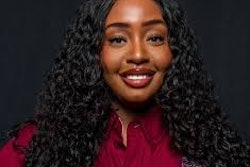On the 50th anniversary of the enactment of Title IX, the National Collegiate Athletic Association (NCAA) issued “The State of Women in College Sports” to illustrate the participation gains for female student-athletes as well as the ongoing inequalities. The report also provides data on the disparities that women of color face when trying to access college sports both as student-athletes and as coaches and administration.
Data for this report came from multiple NCAA resources. The NCAA does not enforce Title IX but does provide information and resources for member institutions.  Amy Wilson
Amy Wilson
Title IX is just 37 words. “No person in the United States shall, on the basis of sex, be excluded from participation in, be denied the benefits of, or be subjected to discrimination under any education program or activity receiving Federal financial assistance.” It was not specifically designed to apply to college sports, but that is where its greatest impact has been.
The report notes that not only has women’s participation in college sports increased over the years but so has racial diversity among female student-athletes. The 2020 data shows that Division I is the most diverse with 32% of participants on women’s teams being women of color, and Division III is the least diverse at 22%.
Division I has the highest women’s participation at 47%, but it also has the largest disparity in the allocation of resources between men’s and women’s programs. The decline in participation rates from high school to college remain stark. In 2018-19, 3.4 million female high school athletes were eligible to play college sports, but only 218,496 actually did.
“Society needs to look to the school systems to provide more access and opportunity in the K–12 space,” said Heather MacCulloch, director of athletics and recreation at Baruch College. “I believe championing efforts to underserved and underrepresented communities with organized outreach is crucial.”
Dr. Tomika L. Ferguson, assistant dean for student affairs and inclusive excellence and an assistant professor in the department of educational leadership at Virginia Commonwealth University School of Education, said the pipeline is not high school to college, it begins with youth.
“There needs to be more of a collective body of individuals who are working not only at the state level but nationally to think about opportunities for formal engagement,” she said. “We have to look at ways to make sports more accessible, particularly those that have scholarship opportunities.”
Ferguson said the report provided the NCAA an opportunity to share its sustainable responses to inequities, such as those exposed at the 2021 Division I Women’s Basketball Tournament. Dr. Tomika Ferguson
Dr. Tomika Ferguson
“Institutions working together can co-create sustainable responses to these issues,” said Ferguson. “Campuses can learn that maybe it’s not just a review of their data, but it’s [about] centering the voices of our student-athletes.”
Dr. Amy Wilson, NCAA managing director of inclusion and the report’s author, said after the 2021 Tournament her job changed to focus on equity at championships.
“We have created a ‘Gender Equity Checklist’ for basketball championships that is being adapted for all championships,” said Wilson. “We want to both model the way for the membership and support their efforts to achieve equity.”
Women currently hold 25% of all NCAA head coaching and athletic director positions and 30% of conference commissioner positions. In 2020, 16% of female head coaches of women’s teams and 16% of female athletic directors were minority women. While spending on women’s college sports have increased over the years, there is persistent inequity. Divisions II and III have more equitable spending between men’s and women’s programs than Division I.
There are several emerging sports that can potentially be added to collegiate sports programs, such as acrobatics and tumbling, rugby, triathlon and wrestling, but these sports do not tend to attract large minority participation. MacCulloch noted that not all families can afford some sports, so offering sliding scales based on income could be effective for growing the pipeline. Ferguson said if more girls can gain access to sports like lacrosse, golf and the emerging sports, it puts pressure on institutions to grow sports programs for female student-athletes.
A recurrent trope is that Title IX has brought about the end of some collegiate men’s programs. The report indicates that some athletic departments focus much of their resources on football and men’s basketball, leaving limited resources for other sports.
Tim Walsh, managing director of the education industry section of Huron, a management consulting firm, said, the economics of intercollegiate athletics are not healthy or sustainable for most institutions and many aspects of gender equity, "particularly with respect to participation and spending on women’s programs, are quite expensive with limited revenue returns in most cases,” he said.
In honor of Title IX’s 50th anniversary Huron challenged colleges and universities to pledge to invest adequate funding levels to sustain women’s sports and increase the presence of women in leadership roles across athletic departments. “We think a recommitment to the foundational principles of Title IX is key to avoid tempting decisions to step back from those principles in the interest of financial sustainability,” said Walsh.
“It is vital that decision makers, those with power—presidents/chancellors, athletic directors—genuinely commit and act on providing resources and removing barriers for female student-athletes,” said Wilson.
MacCulloch noted that while Title IX addresses discrimination based on gender, it hasn’t addressed the fact that women don’t always fit into the male model of sports.
“We need to look at it holistically from the ground up,” she said.















